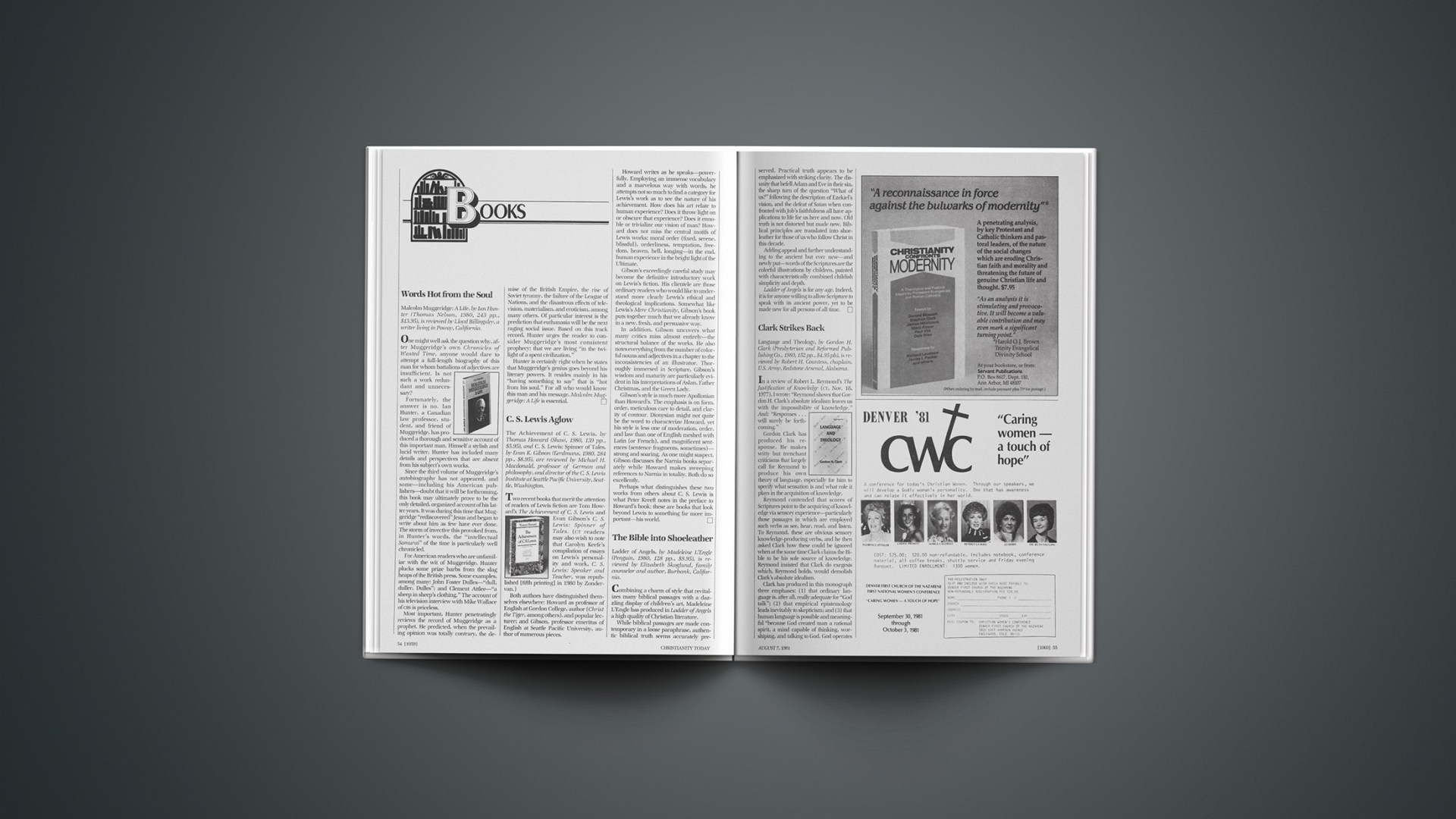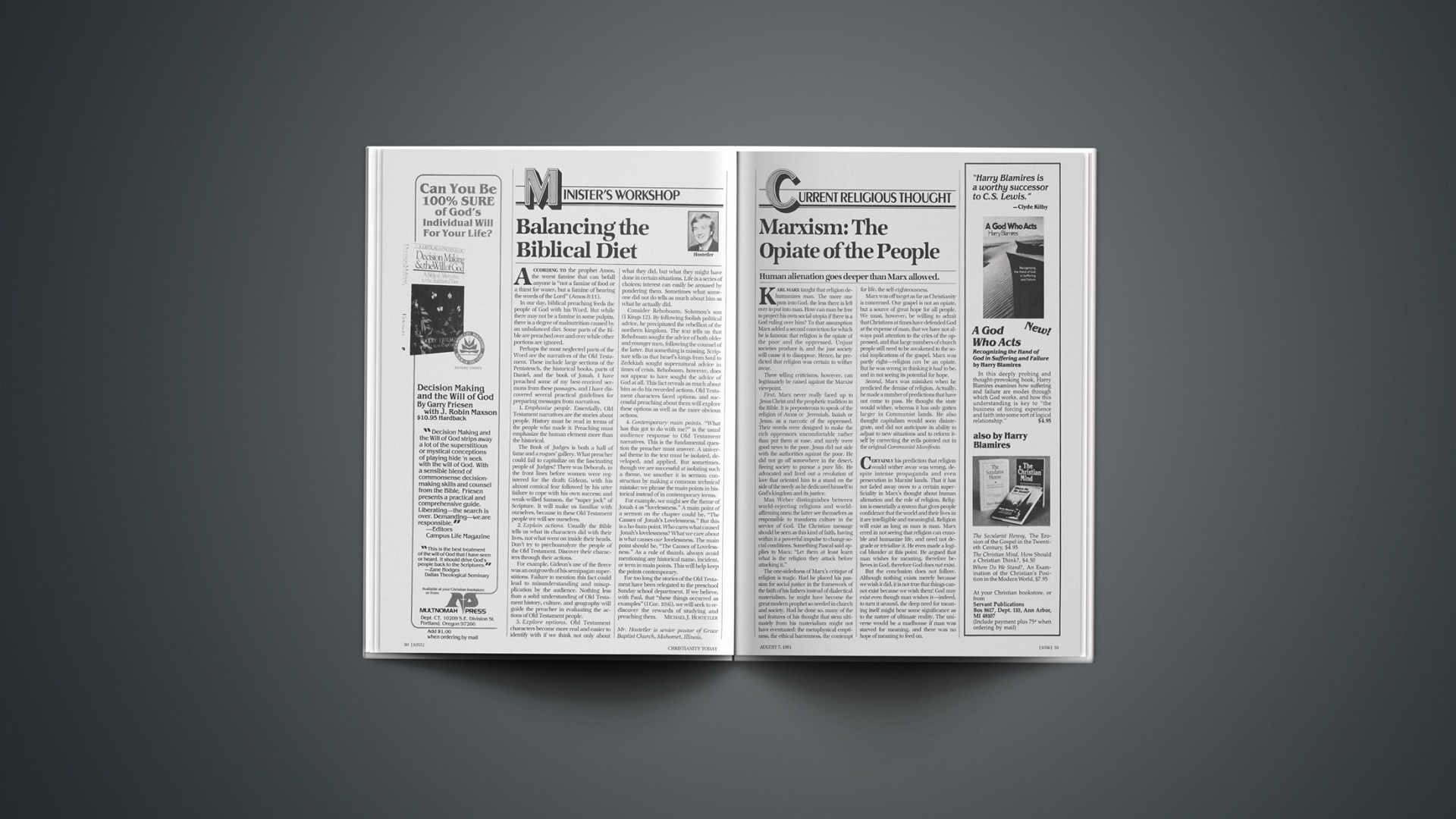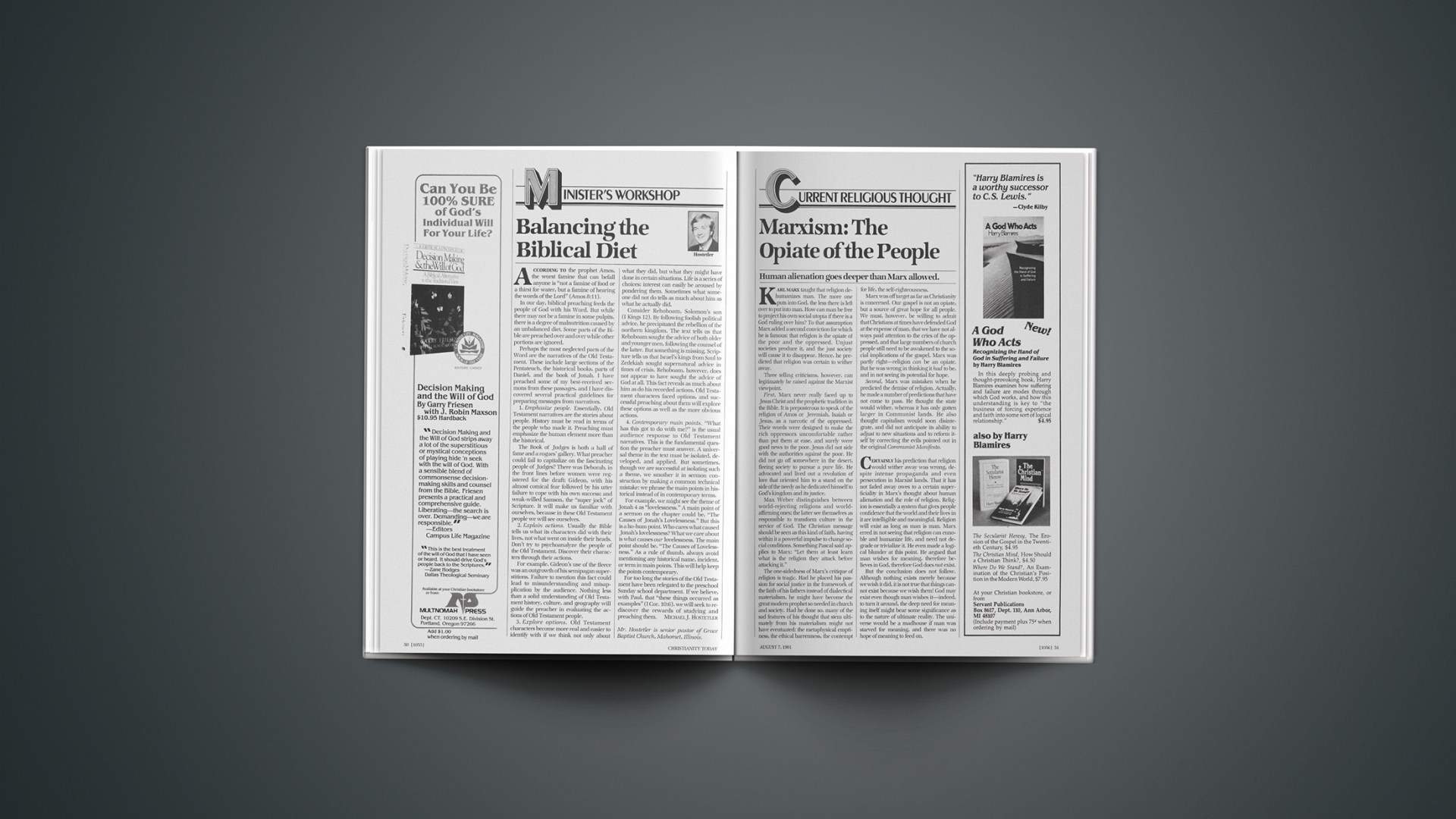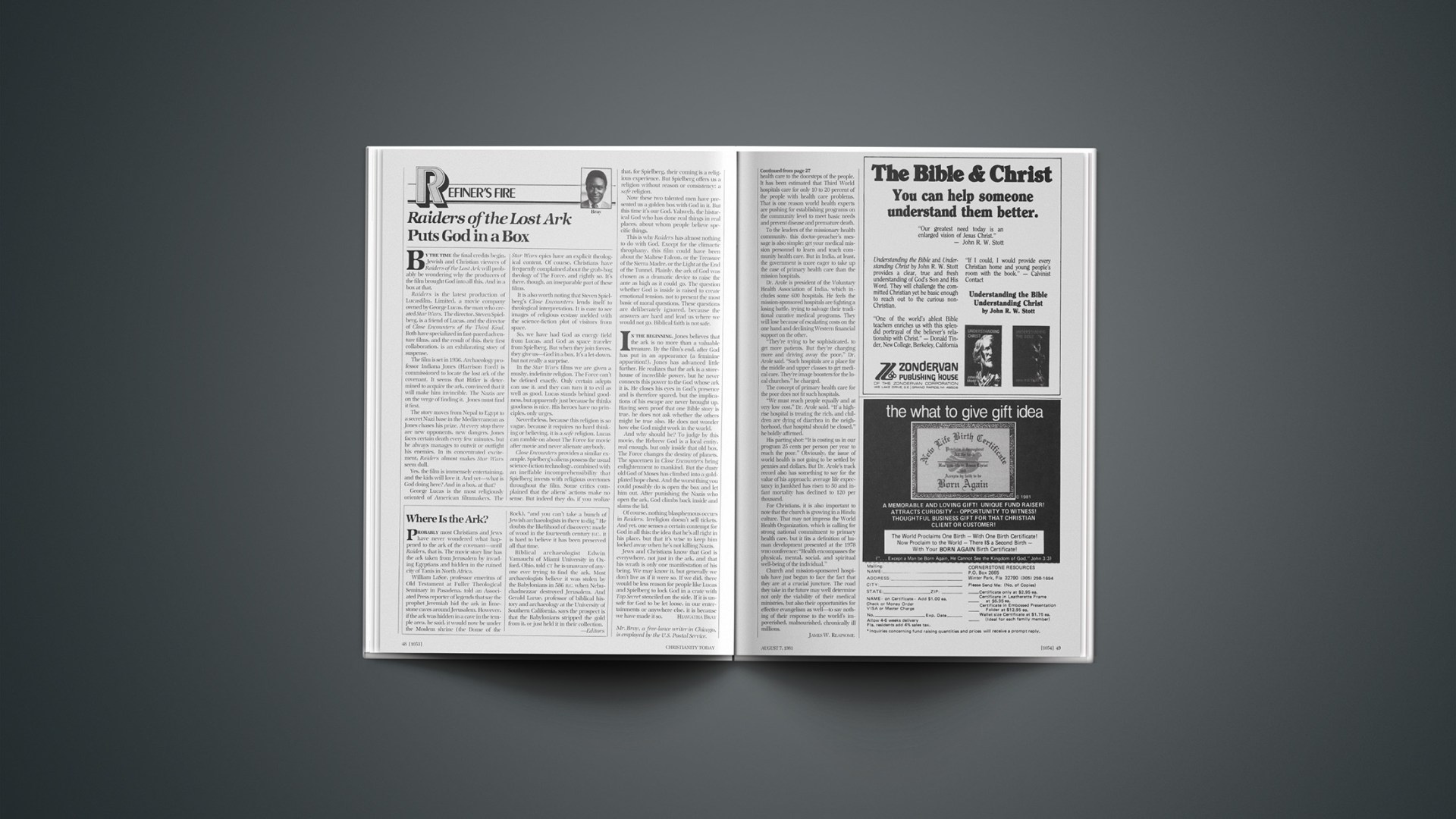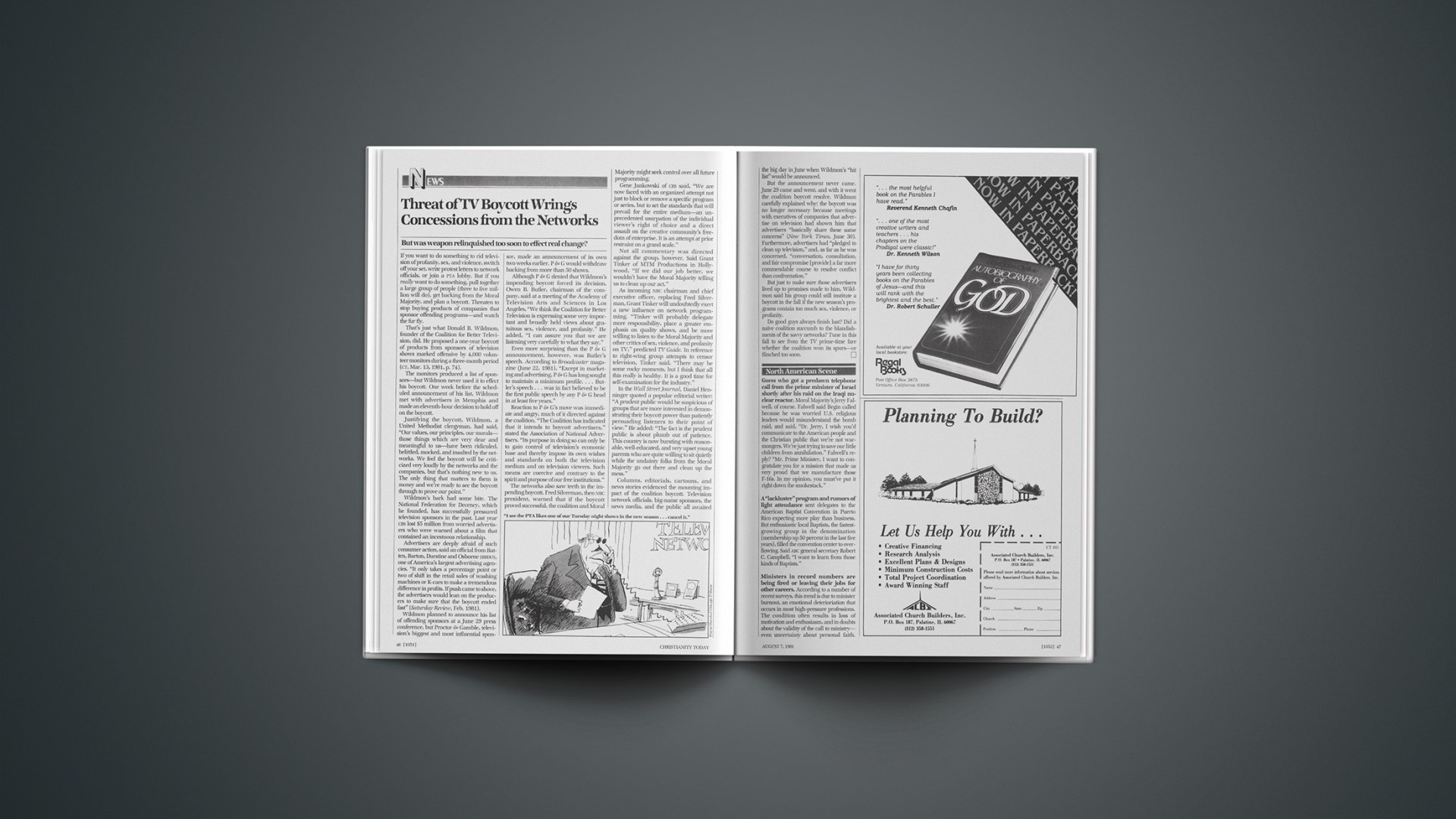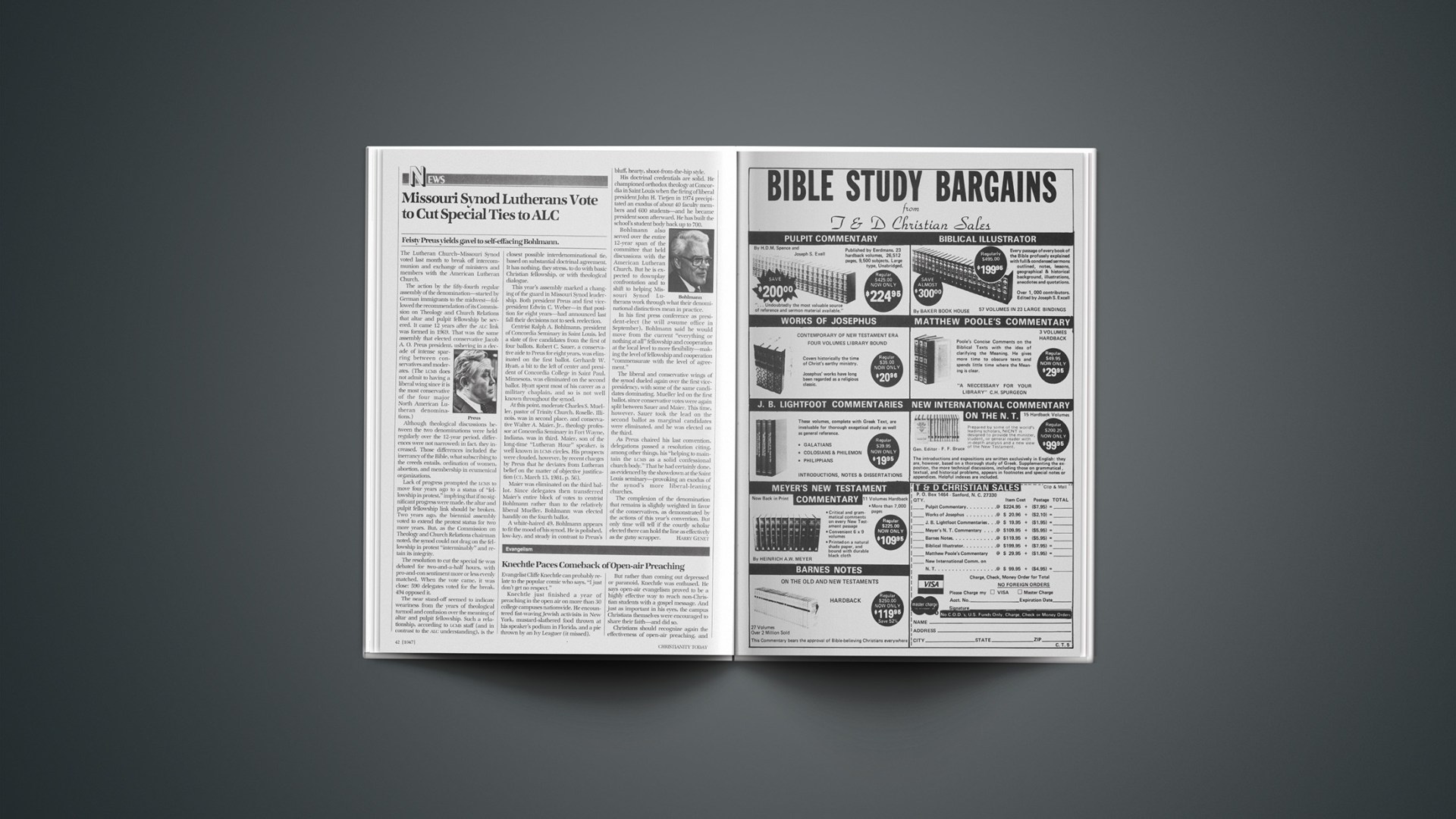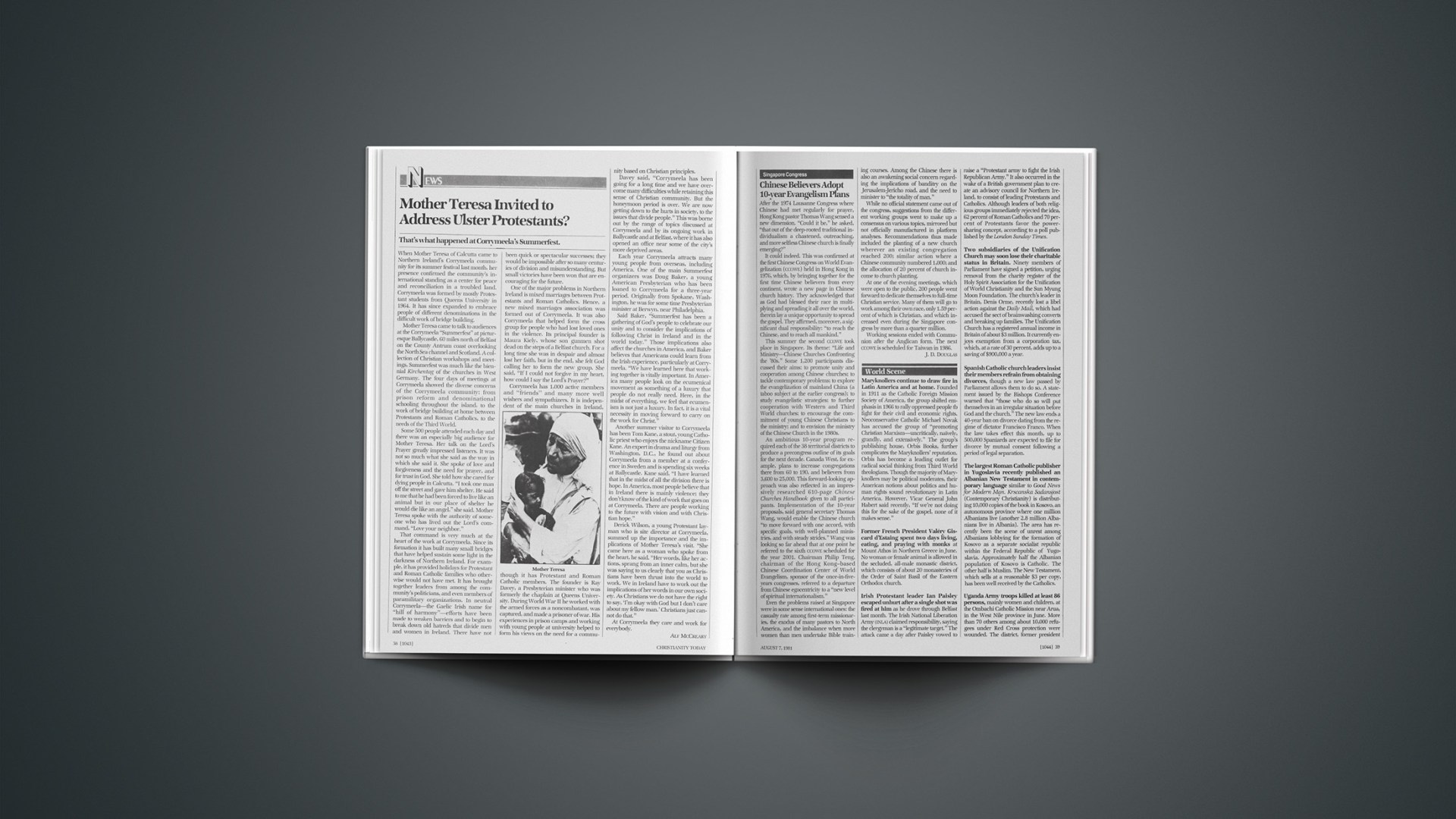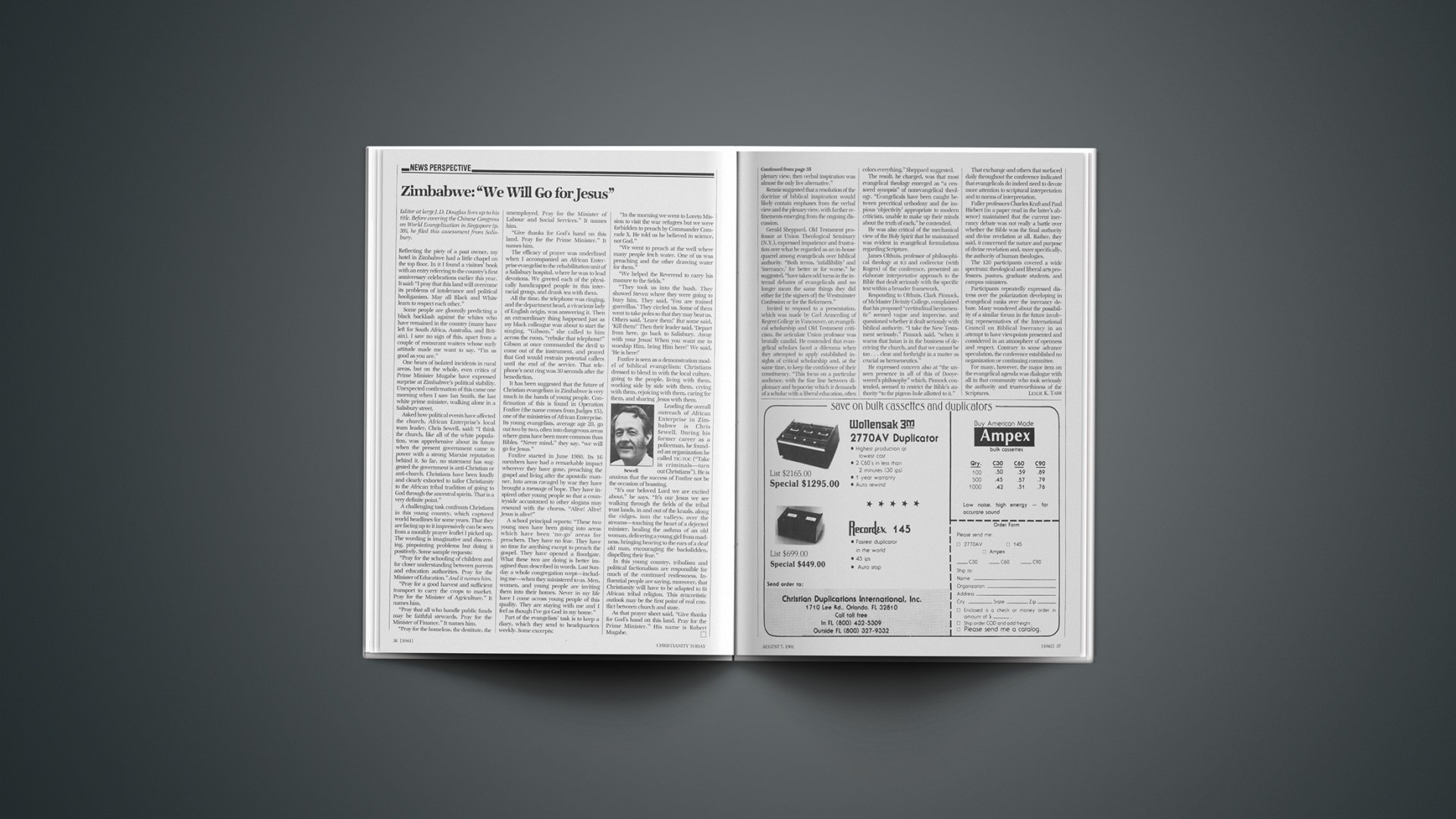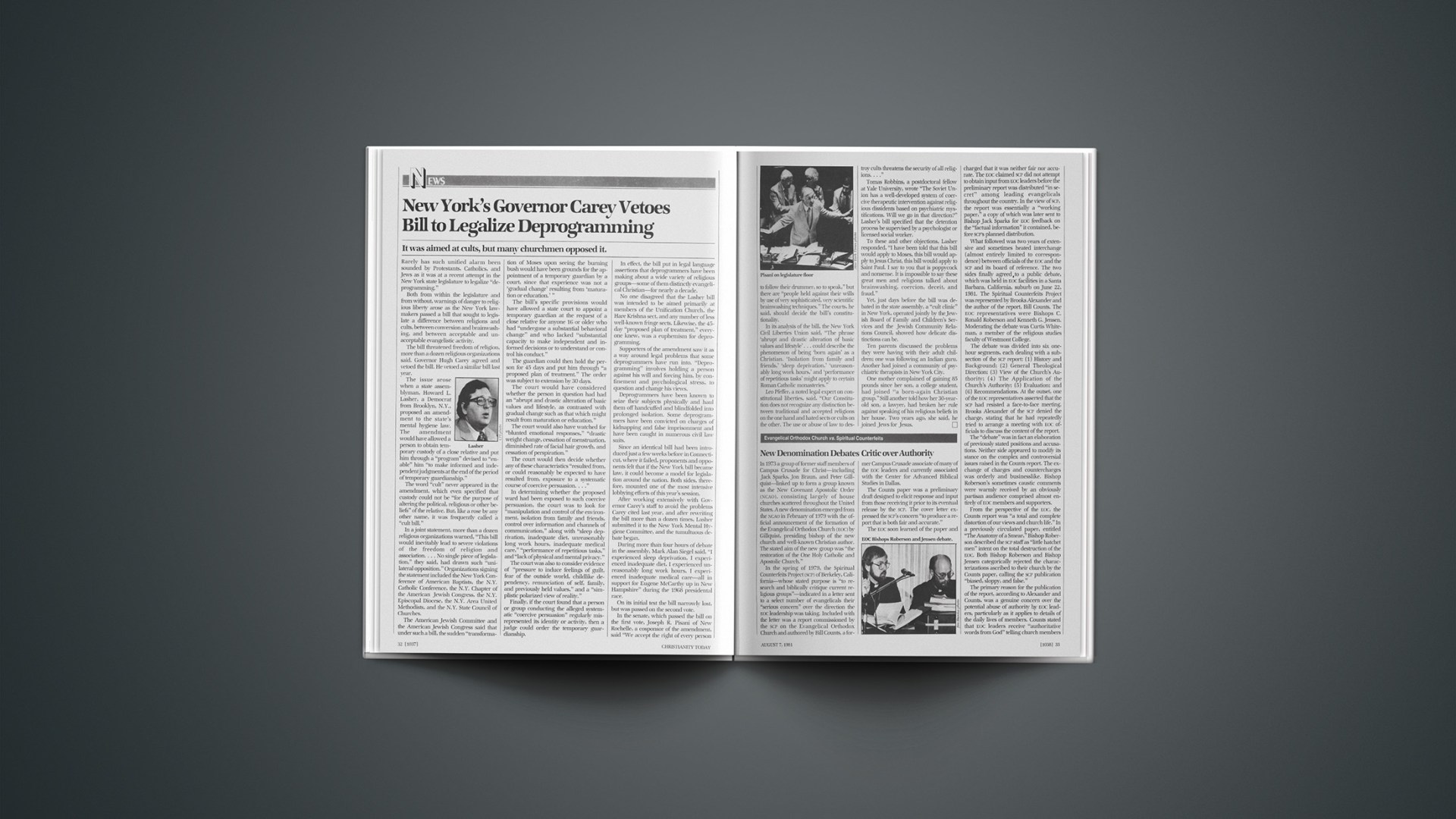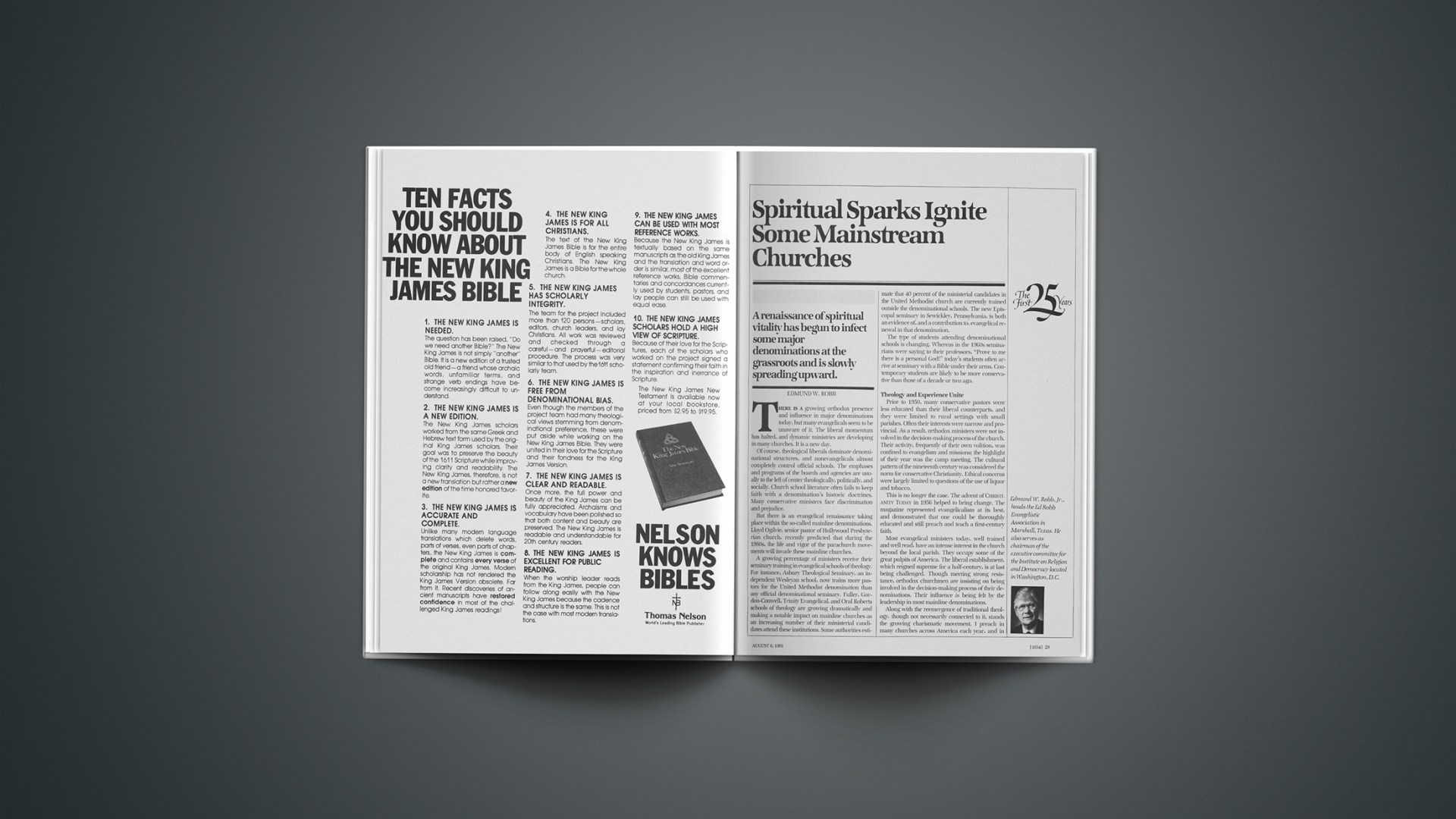Words Hot From The Soul
Malcolm Muggeridge: A Life, by Ian Hunter (Thomas Nelson, 1980, 243 pp., $13.95), is reviewed by Lloyd Billingsley, a writer living in Poway, California.
One might well ask the question why, after Muggeridge’s own Chronicles of Wasted Time, anyone would dare to attempt a full-length biography of this man for whom battalions of adjectives are insufficient. Is not such a work redundant and unnecessary?
Fortunately, the answer is no. Ian Hunter, a Canadian law professor, student, and friend of Muggeridge, has produced a thorough and sensitive account of this important man. Himself a stylish and lucid writer, Hunter has included many details and perspectives that are absent from his subject’s own works.
Since the third volume of Muggeridge’s autobiography has not appeared, and some—including his American publishers—doubt that it will be forthcoming, this book may ultimately prove to be the only detailed, organized account of his latter years. It was during this time that Muggeridge “rediscovered” Jesus and began to write about him as few have ever done. The storm of invective this provoked from, in Hunter’s words, the “intellectual Samurai” of the time is particularly well chronicled.
For American readers who are unfamiliar with the wit of Muggeridge, Hunter plucks some prize barbs from the slag heaps of the British press. Some examples, among many: John Foster Dulles—“dull, duller, Dulles”; and Clement Attlee—“a sheep in sheep’s clothing.” The account of his television interview with Mike Wallace of CBS is priceless.
Most important, Hunter penetratingly reviews the record of Muggeridge as a prophet. He predicted, when the prevailing opinion was totally contrary, the demise of the British Empire, the rise of Soviet tyranny, the failure of the League of Nations, and the disastrous effects of television, materialism, and eroticism, among many others. Of particular interest is the prediction that euthanasia will be the next raging social issue. Based on this track record, Hunter urges the reader to consider Muggeridge’s most consistent prophecy: that we are living “in the twilight of a spent civilization.”
Hunter is certainly right when he states that Muggeridge’s genius goes beyond his literary powers. It resides mainly in his “having something to say” that is “hot from his soul.” For all who would know this man and his message, Malcolm Muggeridge: A Life is essential.
C. S. Lewis Aglow
The Achievement of C. S. Lewis, by Thomas Howard (Shaw, 1980, 139 pp., $5.95), and C. S. Lewis: Spinner of Tales, by Evan K. Gibson (Eerdmans, 1980, 284 pp., $8.95), are reviewed by Michael H. Macdonald, professor of German and philosophy, and director of the C. S. Lewis Institute at Seattle Pacific University, Seattle, Washington.
Two recent books that merit the attention of readers of Lewis fiction are Tom Howard’s The Achieiement of C. S. Lewis and Evan Gibson’s C. S. Lewis: Spinner of Tales. (CT readers may also wish to note that Carolyn Keefe’s compilation of essays on Lewis’s personality and work, C. S. Lewis: Speaker and Teacher, was republished [fifth printing] in 1980 by Zondervan.)
Both authors have distinguished themselves elsewhere: Howard as professor of English at Gordon College, author (Christ the Tiger, among others), and popular lecturer; and Gibson, professor emeritus of English at Seattle Pacific University, author of numerous pieces.
Howard writes as he speaks—powerfully. Employing an immense vocabulary and a marvelous way with words, he attempts not so much to find a category for Lewis’s work as to see the nature of his achievement. How does his art relate to human experience? Does it throw light on or obscure that experience? Does it ennoble or trivialize our vision of man? Howard does not miss the central motifs of Lewis works: moral order (fixed, serene, blissful), orderliness, temptation, freedom, heaven, hell, longing—in the end, human experience in the bright light of the Ultimate.
Gibson’s exceedingly careful study may become the definitive introductory work on Lewis’s fiction. His clientele are those ordinary readers who would like to understand more clearly Lewis’s ethical and theological implications. Somewhat like Lewis’s Mere Christianity, Gibson’s book puts together much that we already know in a new, fresh, and persuasive way.
In addition, Gibson uncovers what many critics miss almost entirely—the structural balance of the works. He also notes everything from the number of colorful nouns and adjectives in a chapter to the inconsistencies of an illustrator. Thoroughly immersed in Scripture, Gibson’s wisdom and maturity are particularly evident in his interpretations of Aslan, Father Christmas, and the Green Lady.
Gibson’s style is much more Apollonian than Howard’s. The emphasis is on form, order, meticulous care to detail, and clarity of contour. Dionysian might not quite be the word to characterize Howard, yet his style is less one of moderation, order, and law than one of English meshed with Latin (or French), and magnificent sentences (sentence fragments, sometimes)—strong and soaring. As one might suspect, Gibson discusses the Narnia books separately while Howard makes sweeping references to Narnia in totality. Both do so excellently.
Perhaps what distinguishes these two works from others about C. S. Lewis is what Peter Kreeft notes in the preface to Howard’s book: these are books that look beyond Lewis to something far more important—his world.
The Bible Into Shoeleather
Ladder of Angels, by Madeleine L’Engle (Penguin, 1980, 128 pp., $9.95), is reviewed by Elizabeth Skoglund, family counselor and author, Burbank, California.
Combining a charm of style that revitalizes many biblical passages with a dazzling display of children’s art, Madeleine L’Engle has produced in Ladder of Angels a high quality of Christian literature.
While biblical passages are made contemporary in a loose paraphrase, authentic biblical truth seems accurately preserved. Practical truth appears to be emphasized with striking clarity. The disunity that befell Adam and Eve in their sin, the sharp turn of the question “What of us?” following the description of Ezekiel’s vision, and the defeat of Satan when confronted with Job’s faithfulness all have applications to life for us here and now. Old truth is not distorted but made new. Biblical principles are translated into shoe-leather for those of us who follow Christ in this decade.
Adding appeal and further understanding to the ancient but ever new—and newly put—words of the Scriptures are the colorful illustrations by children, painted with characteristically combined childish simplicity and depth.
Ladder of Angels is for any age. Indeed, it is for anyone willing to allow Scripture to speak with its ancient power, yet to be made new for all persons of all time.
Clark Strikes Back
Language and Theology, by Gordon H. Clark (Presbyterian and Reformed Publishing Co., 1980, 152 pp., $4.95 pb), is reviewed by Robert H. Countess, chaplain, U.S. Army, Redstone Arsenal, Alabama.
In a review of Robert L. Reymond’s The Justification of Knowledge (CT, Nov. 18, 1977), I wrote: “Reymond shows that Gordon H. Clark’s absolute idealism leaves us with the impossibility of knowledge.” And: “Responses … will surely be forthcoming.”
Gordon Clark has produced his response. He makes witty but trenchant criticisms that largely call for Reymond to produce his own theory of language, especially for him to specify what sensation is and what role it plays in the acquisition of knowledge.
Reymond contended that scores of Scriptures point to the acquiring of knowledge via sensory experience—particularly those passages in which are employed such verbs as see, hear, read, and listen. To Reymond, these are obvious sensory knowledge-producing verbs, and he then asked Clark how these could be ignored when at the same time Clark claims the Bible to be his sole source of knowledge. Reymond insisted that Clark do exegesis which, Reymond holds, would demolish Clark’s absolute idealism.
Clark has produced in this monograph three emphases: (1) that ordinary language is, after all, really adequate for “God talk”; (2) that empirical epistemology leads inevitably to skepticism; and (3) that human language is possible and meaningful “because God created man a rational spirit, a mind capable of thinking, worshiping, and talking to God. God operates through his Logos, the wisdom that enlightens every man in the world” (p. 152).
Language and Theology is Gordon Clark’s defense of his epistemology known as “spiritual rationalism” (p. 131). When an empiricist states, “Knowledge is derived from the senses,” Clark raises several seemingly devastating objections to empirically based epistemology. They are: (1) that sense impressions can be highly untrustworthy; (2) that sense impressions cannot produce concepts; and (3) that sense impressions can never lead to universal propositions (which universal propositions are fundamentally necessary to logical thought [pp. 132ff.]).
At this juncture, one might easily misunderstand Clark, and, possibly, Reymond has. Clark does not deny that sensory impressions exist. Nor does he deny that they provide data with which knowledge has to do. Rather, Clark asserts that sensory impressions produce only sensory impressions—not knowledge—because knowledge is logico-propositional. He believes that logic is “the architecture” of God’s mind and thus logic is universal, valid, and a most necessary basis for knowledge.
It appears that Clark has answered Reymond’s question: “Don’t you have to read the Bible?” (p. 131). Clark readily embraces sensory involvement with his scriptural pages and his way of looking at scriptural, ink-formed words in Hebrew and Greek and English (add also French and German!). But all such sensory impressions do not produce knowledge for Clark. Knowledge derives from logical handling of these data and relating them to concepts built into man’s God-created mind.
Clark fails, however, to confront a most basic issue of Christian epistemology when he does not treat of what he means when he speaks of our knowing God. There is at least on the surface a sterility to Clark’s knowledge. Is knowing two plus two equals four like knowing that in the Bible we are told about God? How can one who believes in these two propositions be comforted by them? Can one love a proposition? Be consoled by a proposition?
Like Reymond, Clark is most effective as a critic. This book is to be recommended highly, but I suspect those seeking positive answers will probably have to continue seeking them.
BRIEFLY NOTED
Pastoral Ministry. The Shepherd Under Christ (Northwestern, Milwaukee, Wis.), by Armin W. Scheutze and Irwin J. Habeck, is a textbook for pastoral theology, covering topics from the call to the ministry to the shepherd and his supervisors. Criswell’s Guidebook for Pastors (Broadman), by W. A. Criswell, covers the same territory, drawn from over 50 years of success in the pastorate, and defined as “working now toward eight thousand registered every Sunday in Sunday School and toward a giving program of over eight million dollars a year. “Becoming a Prophetic Community (John Knox), by Jack Corbett and Elizabeth Smith, speaks to the social ministry of the church. Lawrence Richards and Clyde Hoeldtke look at the church as an organism, rather than an organization in A Theology of Church Leadership (Zondervan). David Kingrey and Jack Willcuts offer a corporate model for church life in Team Ministry (Barclay, Newberg, Oreg.).
Two nicely done books on conflict are: Resolving Church Conflicts (Harper & Row), by G. Douglass Lewis, and Conflict Ministry in the Church (Broadman), by Larry L. McSwain and William C. Treadwell, Jr.
Dealing specifically with hurting pastors are: Coping with Depression in the Ministry (Cope, 225 South First Ave., Suite 205, Arcadia, Calif.), by Archibald D. Hart, a set of cassettes and booklet of genuine value; Burn-Out: Stages of Disillusionment in the Helping Professions (Human Sciences), by Jerry Edelwich; and Passages of a Pastor (Zondervan), by Cecil R. Paul. This is all useful material.
Preaching. David Steel looks at Preaching Through the Year (John Knox) by focusing on the liturgical seasons. The Homiletical Plot (John Knox), by Eugene L. Lowry, looks at the sermon as narrative art form. Richard Jensen discusses variety and imagination in preaching in Telling the Story (Augsburg). Building Sermons to Meet Peoples’ Needs (Broadman), by Harold T. Bryson and James C. Taylor, is an easy-to-follow homiletical handbook. The Sermon as God’s Word (Abingdon), by Robert W. Duke, looks at the varieties of theological homiletics from fundamentalism to black liberationism. Robert D. Young offers this clue to effective preaching: Be Brief About It (Westminster). Reflections on 40 years of preaching is Postscript to Preaching (Judson), by Gene E. Bartlett.
Church Programs: Three books deal with the library: The Small Church Library: A Guide for Organizing and Managing It (Forward Movement, 412 Sycamore St., Cincinnati, Ohio), more a pamphlet than a book; 121 Ways Toward a More Effective Church Library (Victor), by Arthur K. Saul; and The Church Library Workbook (Light and Life, Winona Lake, Ind.), by Francine E. Walls.
Two truly excellent books by Gerard Berghoef and Lester DeKoster are The Elder’s Handbook and The Deacon’s Handbook, both published by Christian Library Press, Box 2226, Grand Rapids, Michigan.
Understanding Your Church’s Curriculum (Broadman), by Howard P. Colson and Raymond M. Regdon, is now revised for a new generation of pastors.

